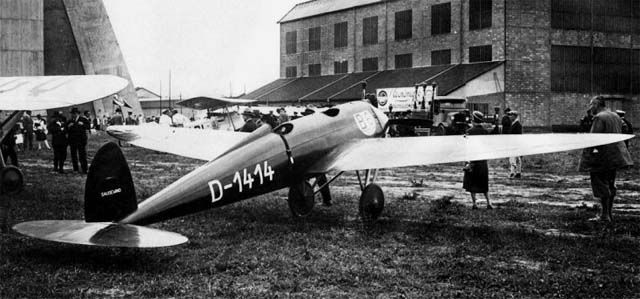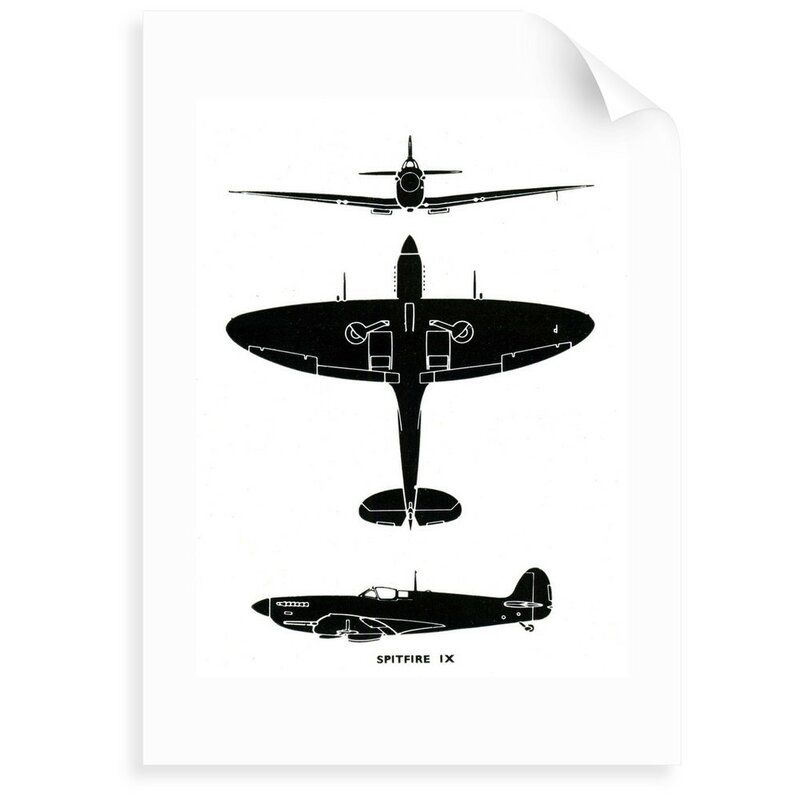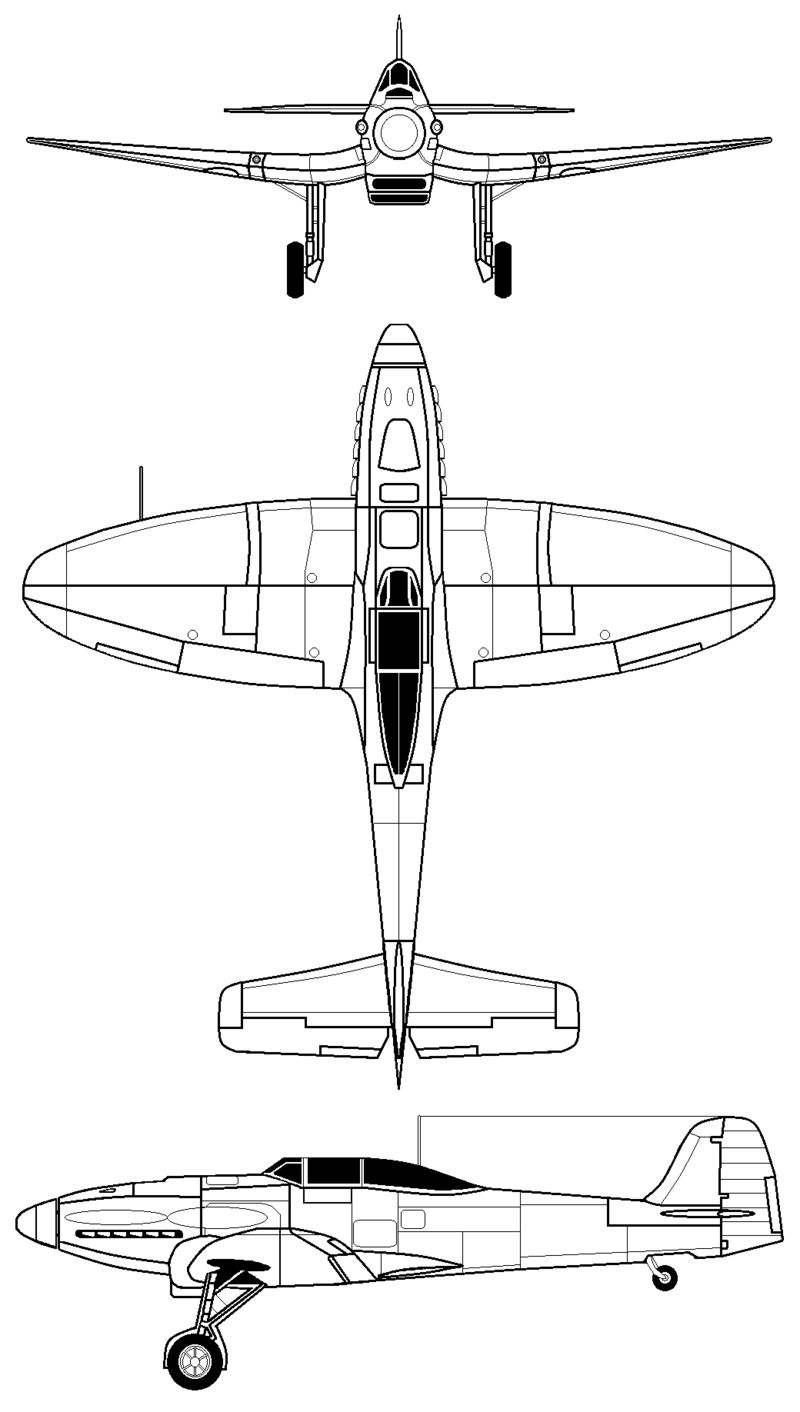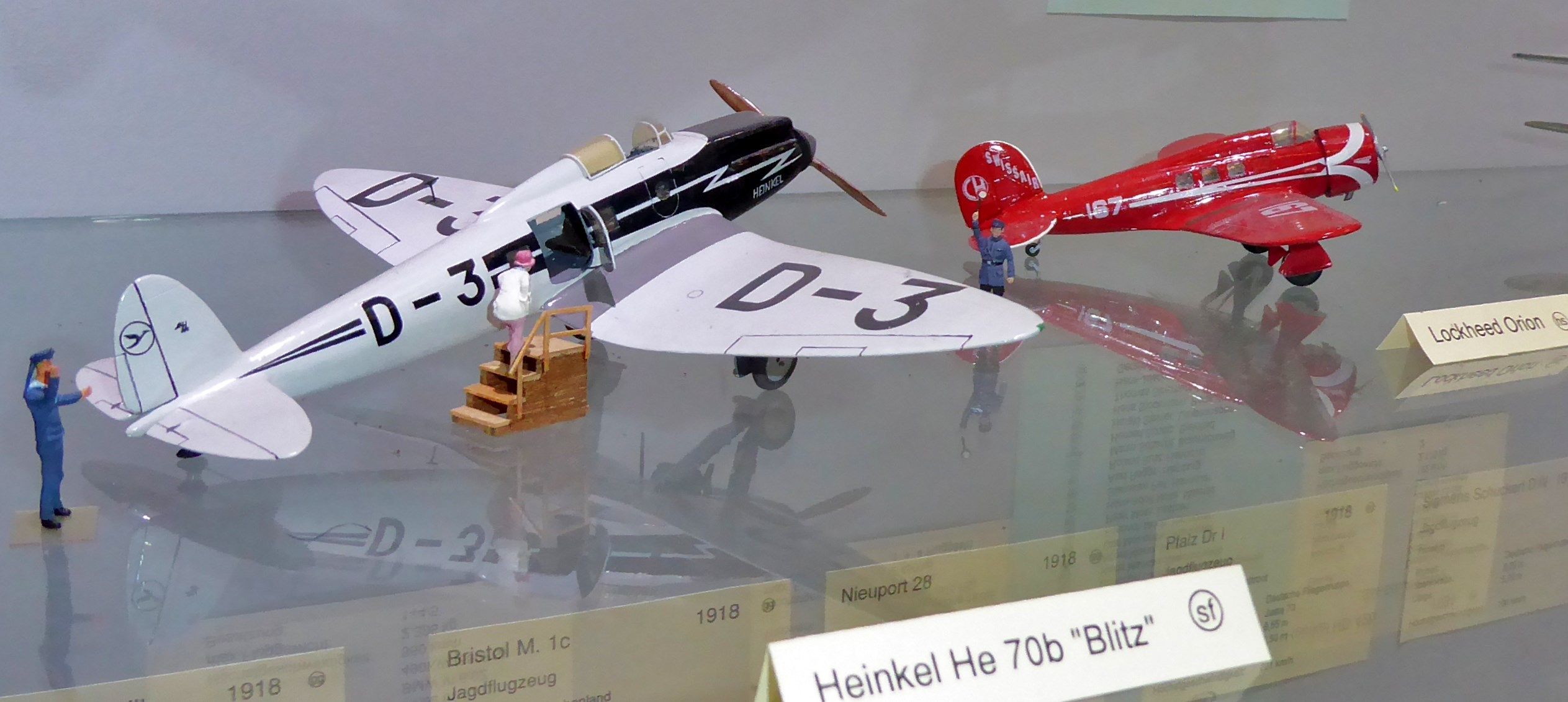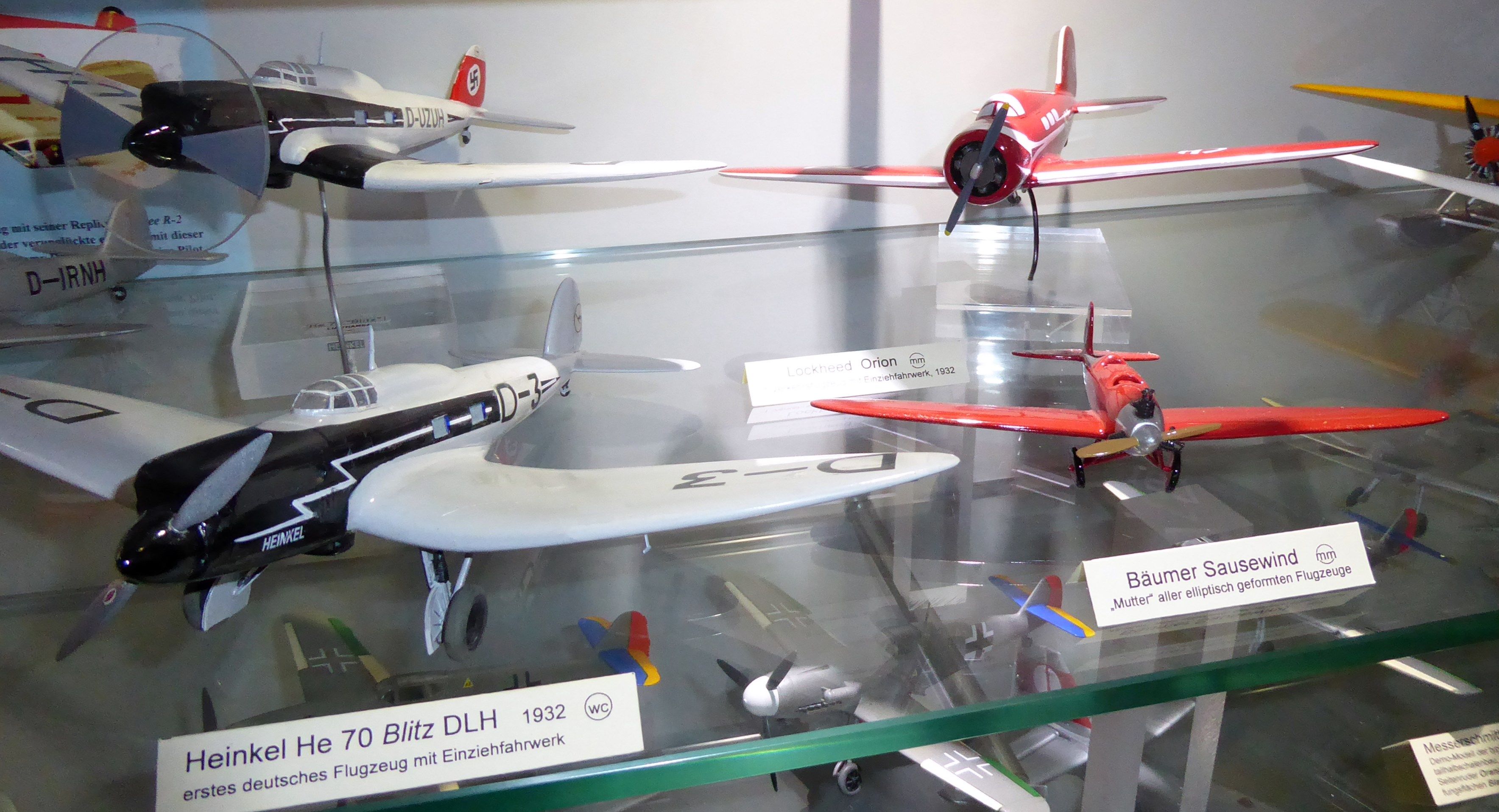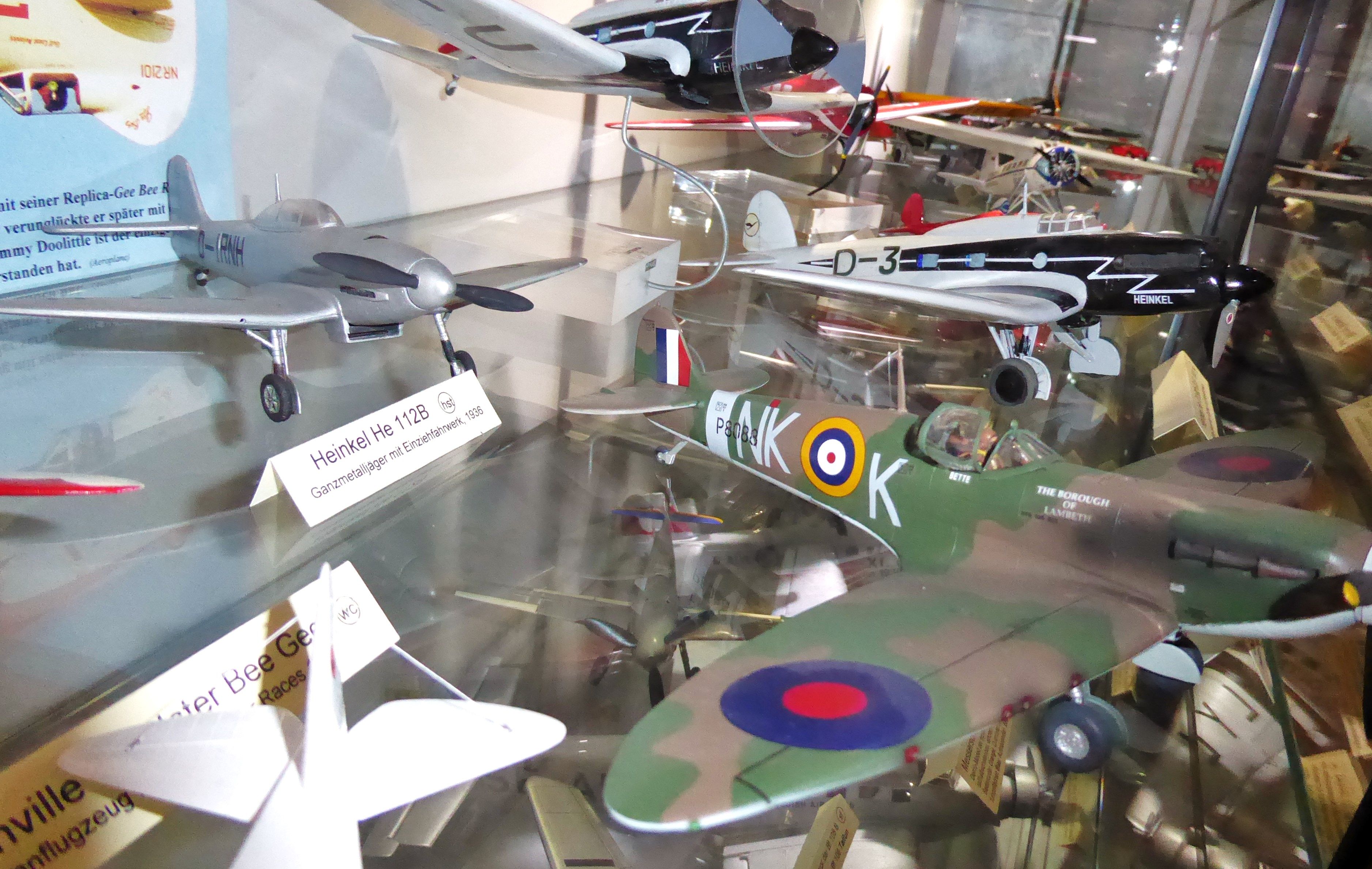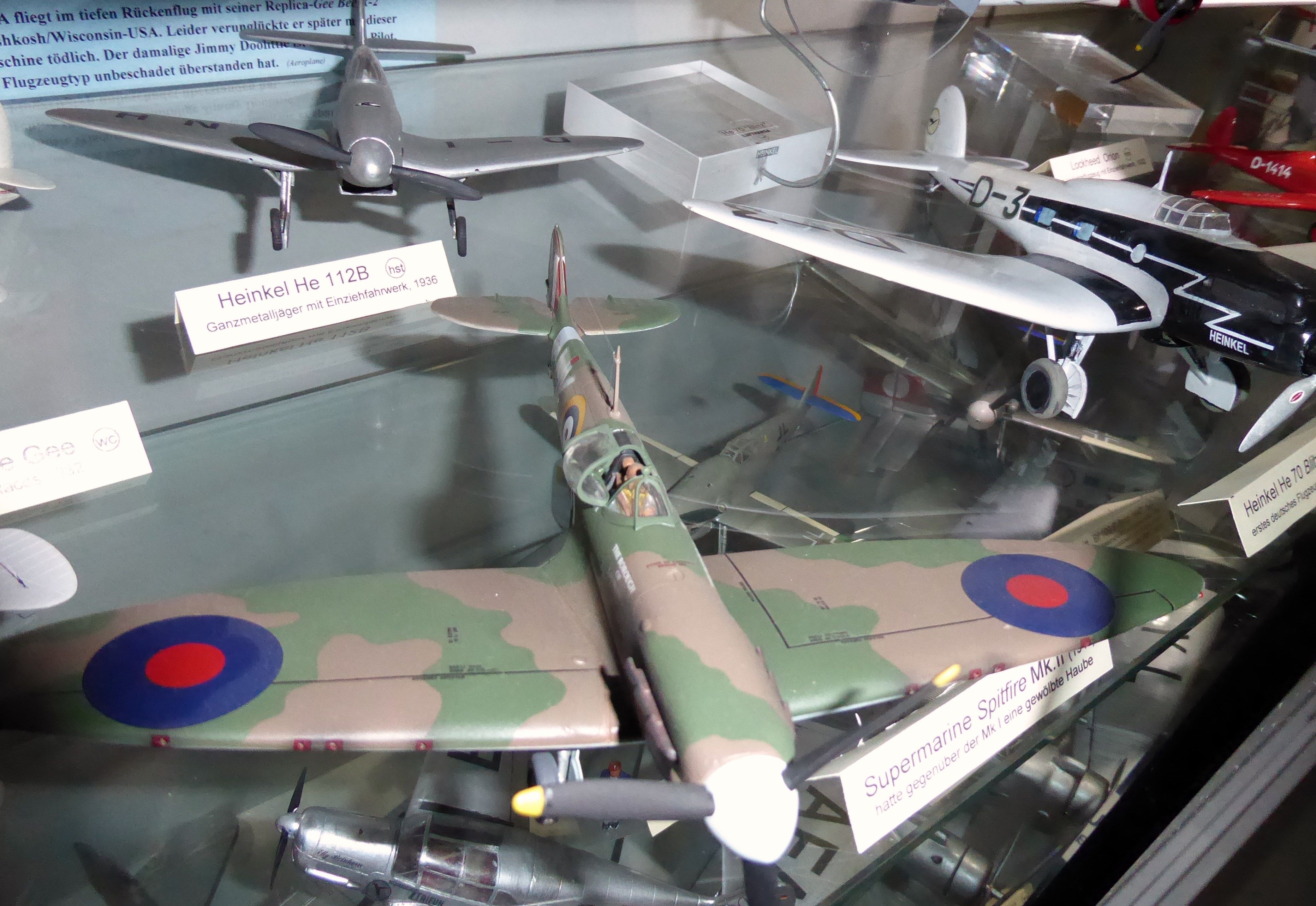Model of the month Juli 2020 Heinkel He 70
Die Heinkel He 70 Blitz und ihr Umfeld
Here - because of the immense importance of this story - we have to go back a little in time. The type of aircraft we are talking about here has an exciting pre- and post history.
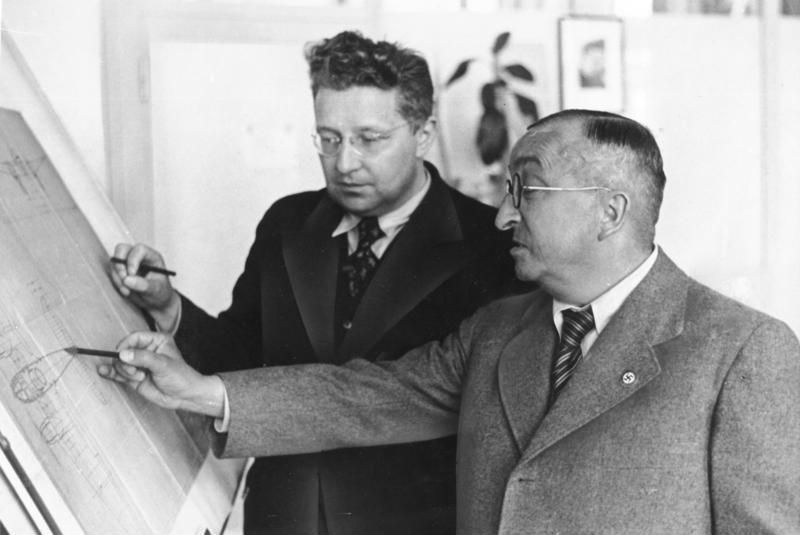
At the beginning there were two students (they were called students at that time and for a long time afterwards!) of the Technical University of Hannover, who had dedicated themselves to aerodynamics and aeronautical engineering. During their studies they were still working on projects at the Hamburg aircraft company Bäumer. The most important one was the innovative „Sausewind“ with its elliptically shaped wing plan, designed by the two students, brothers Walter and Siegfried Günter from Thuringia. At that time there were hardly any other wings than rectangular wings, apart from the Junkers F 13 with its trapezoidal wings, which also brought a significant increase in performance.
This new wing geometry resulted in quite a leap in performance: With a 65 hp air-cooled US three-cylinder radial engine Wright Gale and a take-off weight of 490 kg the two-seater „Sausewind“ with its tension-free elliptical wing had a fantastic average speed of a good 180 km/h on long distance flights. The aircraft had been modified and further improved several times.
Paul Bäumer had a fatal accident in Copenhagen in 1927 during the demonstration of the Rohrbach Rofix fighter plane, which meant that the Gü
And here we come to the Heinkel He 70 Blitz at the beginning of the 1930s, after Günter had developed the sports aircraft Heinkel He 64 as a further development of the Sausewind - but with a trapezoidal wing plan - for the 1932 European round flight Competition, piloted by Elly Beinhorn. This aircraft had no more bracing wires or struts. The new lightweight construction, which was increasingly used after the weight restrictions imposed by the allied victors, was also noticeable here and also contributed to the increase in performance (at almost all aircraft manufacturers in Germany).nter brothers lost their jobs. Ernst Heinkel in Rostock had aviation firmly in mind and always wanted "faster - higher - further" and got Siegfried Günter, now gratuated, and brother Walter a little later - without exams.
At that time all airlines were interested in faster aircraft, and technical development made it possible: At the end of the 1920s, the US research institute NACA (today NASA) invented the NACA canopies, which significantly reduced the massive air resistance of the air-cooled radial engines. These canopies were soon used in the Ju 52, Boeing 247 and Douglas DC-2, all of which were launched at that time.
The next step was the introduction of the drag reducing retractable landing gear, which the US company Lockheed with the legendary designer Jack Northrop achieved right at the beginning of the 1930s. Such a retractable landing gear was first introduced in 1919 by the US racing aircraft Dayton-Wright in 1919, but then led a quiet life. During this time - coming from the USA - controllable pitch propellers with constant speed were introduced, again an increase in performance. To reduce the landing speed it was equipped with split flaps.
Lockheed had used a wooden half-shell construction for the small passenger aircraft Vega, similar to the albatross fighters of the 1st World War, first without, then with NACA canopy. With such an aircraft Amelia Earhart was the first woman to fly across the Atlantic (her red Vega can be admired today in the Smithsonian in Washington D/C). The step that followed was a low-wing aircraft of similar dimensions, the Lockheed Orion, also in this wooden construction, but now with retractable landing gear.
The Deutsche Luft Hansa (the name was made into one word later) noticed this, especially since the Swiss Swissair was flirting with the Orion. Ernst Heinkel did not let him rest. He applied to Luft Hansa and Swissair with the new design of the Heinkel He 70 Blitz for this call of tender for a fast medium-haul airliner.
The He 70 was a low-wing aircraft, stress-free, with a fuselage of metal half-shells, with recessed rivets (!) and wooden wings with retractable landing gear. It could carry up to 5 passengers and 1 pilot, and this with a BMW VI
In-line twelve-cylinder engine, water-cooled, with an initial output of 550 kW/700 hp. With this she made a cruise speed of 280 km/h (v/max 360 km/h!).
The transfer of the aerodynamics of the Sausewind with the elliptical wing to this much larger new construction enabeled these performances. The competitor model Lockheed Orion made of wooden half-shells showed similar performances with trapezoidal surfaces, a radial engine from Wright with NACA hood, and 575 HP.
A new path in aviation had been taken, and success was not to be missed. In 1935 Lufthansa operated 10 aircraft in intra-European air traffic. Further examples went to the Luftwaffe and to Spain and Hungary. In 1932-35 the He 70 was faster than the double-decker fighters of the time.
Then the British aircraft engine company Rollce-Royce bought one and equipped it with the then ultra-modern Kestrel aircraft engine, a modern vertical V-12 liquid-cooled high-performance engine with 510 kW/ 695 hp. With this, the He 70 even made 410 km/h v/max and v/travel at 370 km/h. And this He 70 became Supermarine's aerodynamic model for the Spitfire, the British fighter of World War II, designed by its top designer Mitchell.
Above: Ernst Heinkel and Siegried Günter at a drawing board at Heinkel, where the twin brothers Siegfried and Walter Günter made a great aviation career after leaving Bäumer. Walter was killed in an accident in 1937, Siegfried stayed with Heinkel and had to go to the Soviet Union for a few years after the World War. From about 1955 he worked again for Heinkel and the EWR Süd. Below: The innovative Bäumer Sausewind, aerodynamic model for the Heinkel He 70 and the British Supermarine Spitfire.
On the left side we see the Supermarine Spitfire Mk. IX, whose aerodynamics corresponded very much to the Mk. I On the right the Heinkel He 112, developed with similar aerodynamics, which lost against the Messerschmitt Bf 109 in the Luftwaffe.
Mit dem aus dem Kestrel dann eingeführten RR-Merlin wurde die Spitfire dann ein wesentlicher Hochleistungsjäger der Briten in immer weiter verbesserten Versionen während des gesamten Krieges und später, ähnlich wie die Messerschmitt Bf 109 im Deutschen Reich.
Modelle im Museum in 1:72: Links Bäumer Sausewind, Mitte He 70 V2, rechts Lockheed Orion. Unten He 70 und Lh Orion
Up: In 1:48 in der Schnellflugausstellung: Hinten links Lockheed Orion, rechts Lockheed Vega, mittig Bäumer Sausewind, davor die li. Fläche der He 70 V2
Above in front the Sausewind, on the right the Orion, on the left He 70 V2, above He 70 G-Series - and behind in the shadow the Heinkel He 112. four aircraft from the front on the lower picture in the showcase Schnellflug.
Below, from the other direction, the Supermarine Spitfire Mk. II in front, to the left behind it the He 112, and in the back the aircraft shown above.
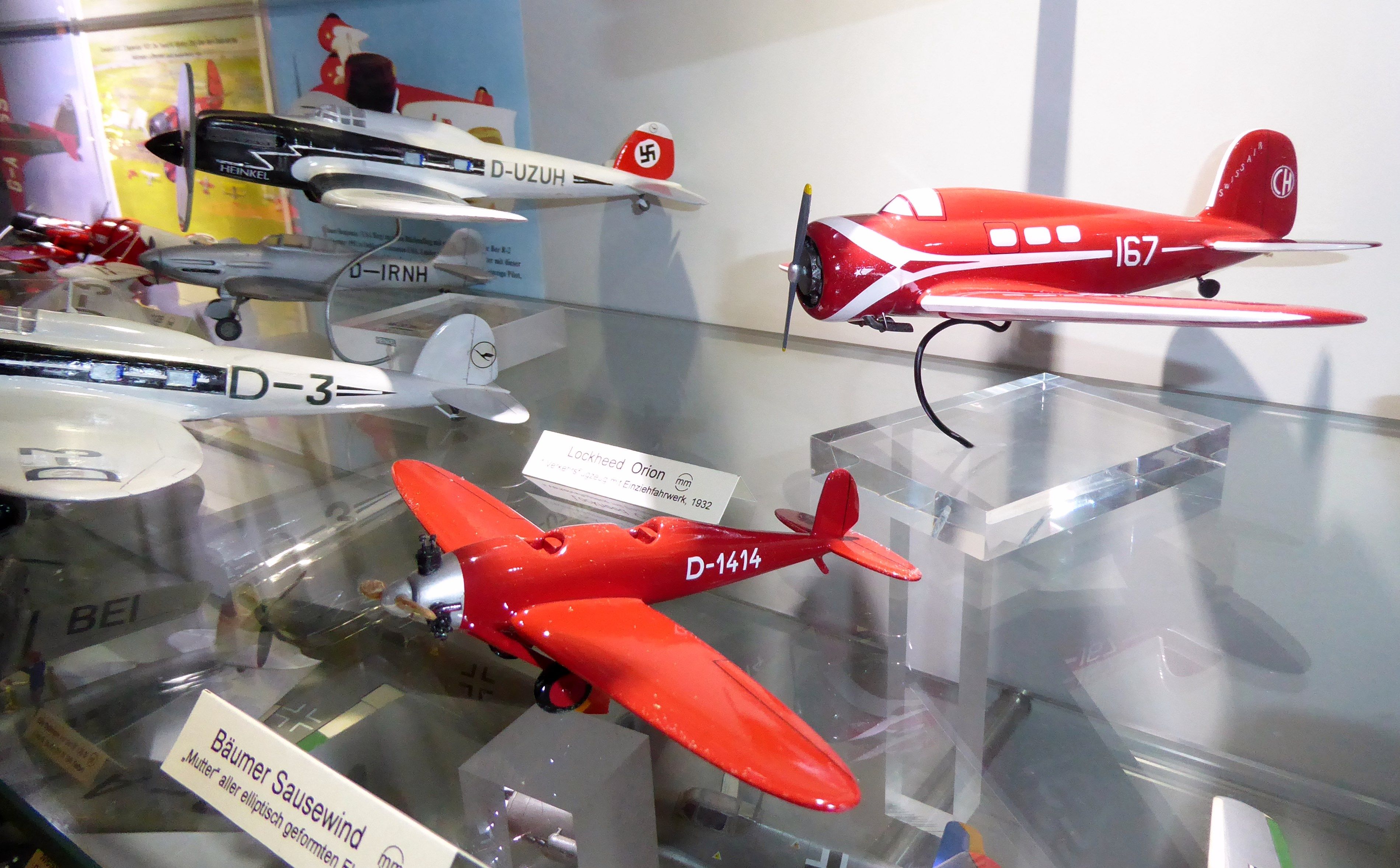
On this side from the other direction in front the Supermarine Spitfire Mk. II, on the left behind it the unsuccessful He 112, in the back the aircraft shown above.
And if you would like to visit our museum and see these models "in real": models 1:72 in Hangar One and models 1:48 in Hangar Two in the high-speed flight exhibition - with many data of this and many other aircraft.
Your Museum Team

